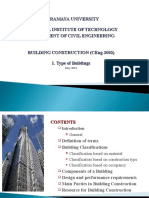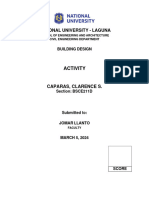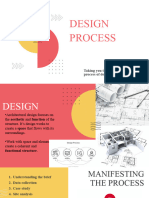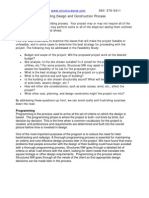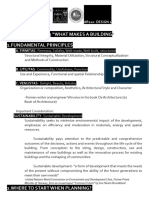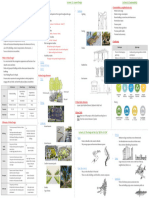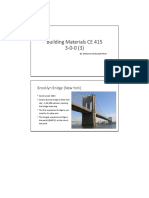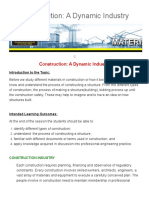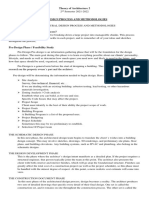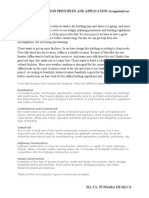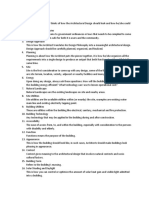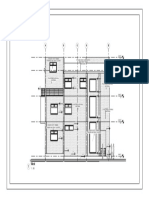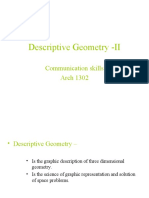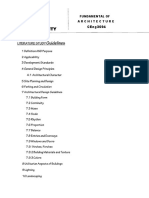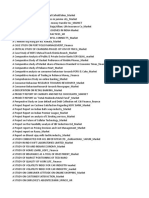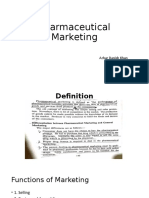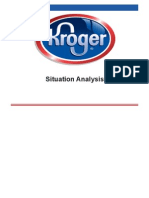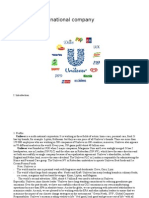0% found this document useful (0 votes)
239 views67 pagesArchitecture: Assosa University
The document provides information on building construction and the architectural design process. It defines what constitutes a building and lists different types of buildings. It also outlines the typical steps in the architectural design process, including pre-design, schematic design, design development, construction documents, bidding and negotiation, construction observation, and supplemental services. For each step, it describes the key activities and deliverables. Additionally, it discusses various considerations for site selection and analysis as well as methods for gathering information, case studies, concept development, program development, bubble diagrams, and block diagrams.
Uploaded by
Abenezer GetachewCopyright
© © All Rights Reserved
We take content rights seriously. If you suspect this is your content, claim it here.
Available Formats
Download as PPTX, PDF, TXT or read online on Scribd
0% found this document useful (0 votes)
239 views67 pagesArchitecture: Assosa University
The document provides information on building construction and the architectural design process. It defines what constitutes a building and lists different types of buildings. It also outlines the typical steps in the architectural design process, including pre-design, schematic design, design development, construction documents, bidding and negotiation, construction observation, and supplemental services. For each step, it describes the key activities and deliverables. Additionally, it discusses various considerations for site selection and analysis as well as methods for gathering information, case studies, concept development, program development, bubble diagrams, and block diagrams.
Uploaded by
Abenezer GetachewCopyright
© © All Rights Reserved
We take content rights seriously. If you suspect this is your content, claim it here.
Available Formats
Download as PPTX, PDF, TXT or read online on Scribd
/ 67






